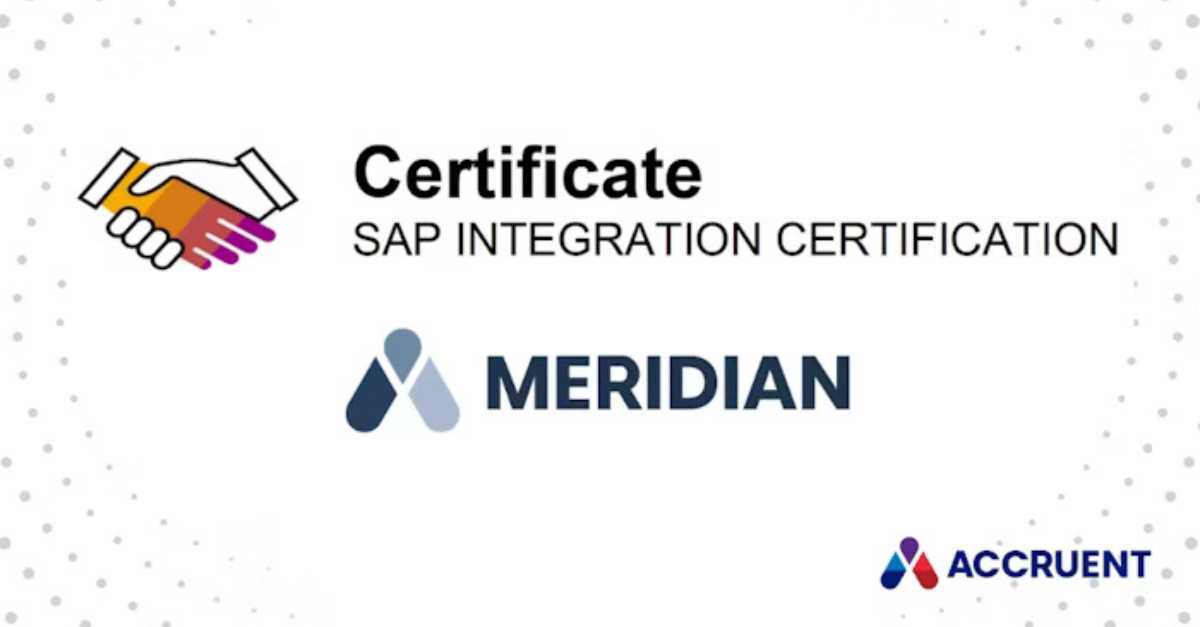
Meridian Acknowledged as an SAP Certified Solution in 2021
See how this EDMS certification will empower SAP customers to effectively automate tasks, connect with customers, and accomplish more with fewer ...
Solutions
Workplace Management Solutions
Real Estate Management Solutions
Maintenance Management Solutions
Energy Management Solutions
Engineering Document Management Solutions
Asset Management Solutions
Automate campus scheduling for classes, meetings, and exams with our EMS software.
Plan and manage conferences effortlessly with EMS software to impress guests and streamline operations.
Boost workplace flexibility and maximize space use with seamless desk and room booking.
Organize workplace or campus events smoothly, creating memorable experiences.
Optimize workspace, manage allocations efficiently, and reduce costs with our space management solutions.
Deliver projects on time and within budget by improving communication, collaboration, and efficiency with our software.
Streamline lease accounting for ASC 842, IFRS, and GASB compliance.
Manage leases efficiently by tracking key dates, analyzing costs, and ensuring compliance.
Centralize data and analytics for better insights, faster negotiations, and revenue growth.
Centralize facility and asset maintenance, automate work orders, and ensure compliance with our CMMS software.
Extend asset life, reduce downtime, and prevent costly repairs with data-driven monitoring.
Prevent equipment failures and extend asset life by detecting and addressing issues early.
Make sustainable, cost-efficient energy decisions by monitoring and optimizing power consumption.
Remotely monitor and control equipment with real-time data to predict issues, boost efficiency, and reduce downtime.
Easily share and collaborate on documents, creating a single source of truth for engineers and contractors.
Manage and analyze assets across their lifecycle to schedule maintenance, reduce downtime, and extend lifespan.
Improve visibility, automate work orders, and ensure compliance for efficient facility and asset management.
Resources
Browse our full library of resources all in one place, including webinars, whitepapers, podcast episodes, and more.
Support
Looking for access to technical support, best practices, helpful videos, or training tools? You’ve come to the right place.
About Accruent
Get the latest information on Accruent, our solutions, events, and the company at large.

The Voice of the Customer approach, where understanding the customer’s needs, requirements and problems is key, may be uncomfortable — but it's also vital.
By Arnoud Kool
Many tech companies initiate their implementation engagements with a software-based focus. Although it may arguably be a more straightforward approach for many, this traditional method may not take into account what problems the customer is trying to solve with the software. With this old approach, the emphasis is on features as opposed to customer use cases. Ultimately, a software-based focus may not lead to the most value for customers.
Alternatively, a customer-centric implementation approach focuses on the Voice of the Customer (VoC), where understanding the customer’s needs, requirements and problems they are trying to face are central. This investigative methodology poses a great implementation difficulty, as the VoC implementation approach places the customer at the centre of the implementation as opposed to the software. For many software companies who feel comfortable leading with their software in the meeting, a VoC implementation approach may be an uncomfortable and unknown arena.
Typically, a meeting is held at the beginning of an implementation, wherein the requirements are listed. A presentation will highlight all the features offered, and the project team is then asked which features are required and how they should be configured. The customer often has to choose how the software will fit into their organisation’s processes. With this approach, typically comments surface such as, ‘this does not work for us’ or ‘we need to have it differently.’
These sorts of conversations can lead to unnecessary customisations, primarily because the consultants do not know the customer’s business processes or problems they are trying to solve.
A more modern approach towards a solution design places the customer’s business processes at the centre. This is a fundamental shift in the way implementation projects are managed. In other words, the old software-centric implementation approach looks at 'how can we fit our software solution with their business' whereas the new way customer-centric looks at 'how can the customer's key business process improve by implementing our solution.'
To have meaningful conversations, we first need to understand where and how the features are working. It is essential as a consultant to capture and comprehend what these processes look like, including the intricacies.
As the Director of Business Consultancy at Accruent, I take pride in our Voice of the Customer implementation approach. We believe in a process where co-creation lives, and trust is established early. Communication is essential, and managing expectations is critical. Expertise is valued, old ways are constructively challenged, and goals are set to alleviate customer pains. In the following section, I will describe a VoC implementation with Meridian, Accruent’s Enterprise Asset Information solution.
A VoC approach to software implementation starts in the critical ‘Define’ phase. The phase begins with preparation for a discovery workshop — designed with the customer at the centre. The workshop serves as required input for the solution design specifications document, which is then used as the foundation for the ‘Build’ phase.
Before the discovery workshop, some prep work is required to ensure that it is productive. To do so, the implementation consultants and customer’s project team have a conference call where the objectives and the format of the workshop are shared.
In the call, the implementation consultants request a list of requirements, process flows and submit questions around their IT infrastructure. All the information gathered at this stage serves as valuable input to run the discovery workshop.
The discovery workshop is typically lead by experienced consultants with proven solution engineering track records. These consultants hold not only software solution knowledge but also in-depth industry expertise that customers can benefit from. This expertise allows them to speak the language of engineers working in various industries, such as Oil & Gas, Chemical, or Pharmaceutical. They can also share industry best practices where appropriate and case studies often lead directly to increased operational efficiency — translating to value creation.
The workshop is the first face-to-face engagement with the project team. Depending on the complexity, the workshop may require one or two days. Within these few days, the consultants will gain a better understanding of their business processes and system/configuration requirements. In doing so, customers often gain more in-depth insight into their operations.
With our industry-specific experience over the past decades, we are then able to recommend process modifications and improvements at a very early stage. Depending on other factors such as multiples sites and business units involved, the workshop scope can be tailored to incorporate the different views on how the process is currently or should be managed.
Of course, there are other phases in the implementation of software. However, placing the customer’s business process and system requirements at the core of the ‘Define’ phase resembles world-class software implementation practices.
Ultimately, the new way of implementing software is proven to improve user adoption and increase time to value. Successful implementation relies on users adopting the software as soon as possible, not after three or six months. Perhaps even more important is that the software solves problems, allowing users to do their job smarter and more efficient than before.
Learn how we can accelerate time-to-value with Accruent Professional Services.
See how this EDMS certification will empower SAP customers to effectively automate tasks, connect with customers, and accomplish more with fewer ...
Maintenance Connection is dedicated to customer success and achieving an industry-leading customer satisfaction rate. Read on.
Accruent was recently established as a Market Leader in FeaturedCustomer’s Fall 2021 Facilities Management Software Customer Success Report. This ...
Subscribe to stay up to date with our latest news, resources and best practices.
* To unsubscribe at any time, please use the “Unsubscribe” link included in the footer of our emails.